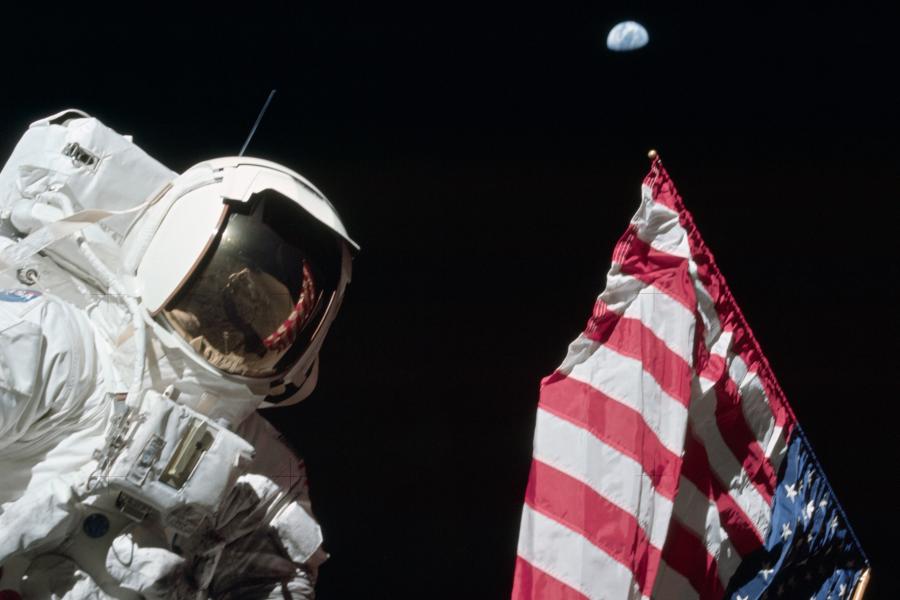How does this encounter make you feel?

The Star-Spangled Banner, with the Earth in the background, faces Jack Schmitt,
1972
-
Bright emotions
-
Not at all Extremely
-
-
Quiet emotions
-
Not at all Extremely
-
-
Heavy emotions
-
Not at all Extremely
-
-
Sombre emotions
-
Not at all Extremely
-
Compare yourself to others
Choose different variables below, and see the patterns of response reflected in the circle of emotion above. Your responses are the coloured wedges. Others' responses are averaged in the spider graph of lines and dots.

Date: 1972
Creator of the image: Eugene Cernan Date of the image creation: 1972 Medium: Photograph Persons depicted: Harrison Schmitt, wearing the headgear, and Eugene Cernan, in the visor reflection This photograph depicts Harrison 'Jack' Schmidt, American geologist and university professor. He poses before the Star-Spangled Banner, with Earth in the background, 400,00km away. Captain Eugene Cernan, an American naval officer, fighter-pilot, engineer and NASA astronaut can be see in the reflection in Schmidt’s visor. He crouches awkwardly in his space suit to get the right photographic angle. The political background to the photograph is a massively expensive US program to land on the moon. On the 11 December 1972, Apollo 17 landed in Taurus-Littrow, a lunar valley on the near side of the moon. Captain Cernan exited the pod on his third trip into space. Harrison Schmidt followed him. They were both supported by the third crew-member, the largely forgotten Ronald Evans, another American Navy officer-engineer-astronaut, who remained in the vessel. Evans later retired from NASAR to go into the coal industry. Schmidt went on to become a Republican senator for New Mexico. Cernan and Schmidt went on three moon walks during their time in Taurus-Littrow, collecting rock specimens and conducting experiments, such as ‘biological cosmic ray experiment’, which involved exposing mice to cosmic rays and seeing what damage was done. One of their pressing tasks involved the setting up of the American flag pictured in our image. This nylon flag was mounted on telescoping tubes made from anodized aluminium, and required a horizontal pole to hold the flag somewhat erect, owing to the lack of atmosphere. The flag was stored on the outside of the Lunar Module, near the descent ladder for convenient access. The stars-n-stripes were protected in a thermally insulated case that could withstand temperatures of over 1,000 °C. Forty years later, in 2012, images captured by the Lunar Reconnaissance Orbiter revealed that the flag was still standing.